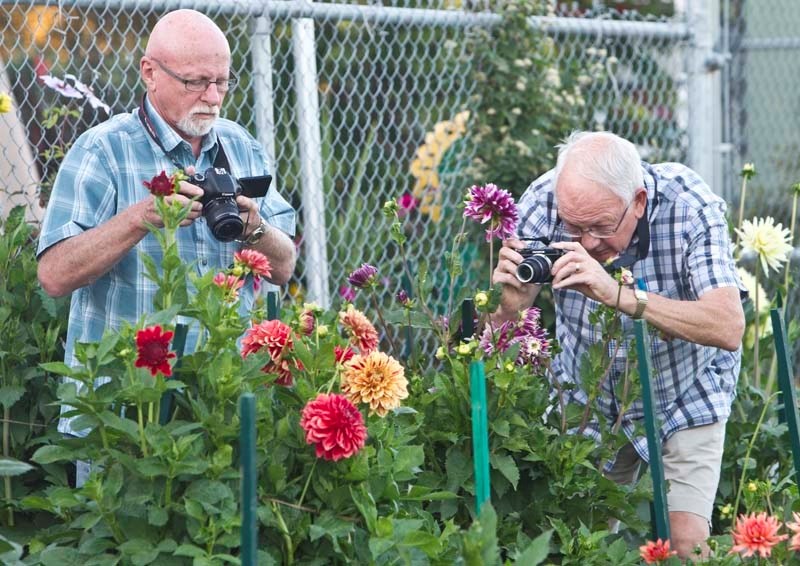It's not hard to line up a big yellow dinner plate-sized dahlia in your camera's viewfinder at the same time as you click the button to produce a photo of the blossoming beauty. Hold up the photo, and everyone may admire the beauty of the flower preserved for all time in your shot.
But as photographer Heather Landals explained last week at a workshop at the St. Albert Botanic Park, it can be more interesting to move beyond the simple photo to produce a more artistic piece that not only depicts the flower, but also becomes something more. To do that, photographers have to learn the mechanisms of their own camera, and occasionally it might mean foregoing the automatic mode so they can play with light.
Landals, of Best Kept Secrets Photography, began her presentation by inviting the students to stroll through the park with her to take photos of the flowers. As the students lined up their shots, she provided tips but she also suggested that the camera addicts push the limits by trying different settings and different ways to compose their shots.
"Try shooting from every angle. See which angle is more pleasing to you. Often art is trial and error," she said.
Landals used the fence that separates the rose garden from the larger park to demonstrate several design and composition basics. She used the fence as a visual tool to lead the eye to the subject of her photo, which was a yellow daisy.
"If you use the rule of thirds, usually the focus of your photo will not be dead centre. The eye travels into the image from left to right and stops. In most cases, where you want the eye to stop, put that thing (the yellow flower) off to the side. The fence is the leading line that makes your eye look at a thing. The fence pulls your eye in. The fence is pointing to the flower," she said.
Sometimes the photographer needs to change her height by standing on something or by crouching down.
Or she may want to change the angle of the shot so there is less visual distraction, Landals explained as she moved to the side of a dahlia instead of shooting it full on. By moving her angle, she was able to focus on the flower at the same time as the background was blurred out so that the dahlia was outlined against a dark green backdrop.
"The camera can't focus on both the foreground and the background at the same time. This changes the depth of field and pushes the background away. If you shot straight on, everything would remain sharp," she said.
Aperture f/stop
At the same time, she moved the camera's aperture setting from automatic to a lower number f/stop setting. The larger the aperture value the smaller the lens opening, which means less light will be allowed to enter the camera.
"If you had an F-22 setting you could take a photo of the whole garden. All of it would be in focus. If you change it to F-4, the background would be a blur and your subject would be in focus," Landals said as she showed how to control the camera, rather than have the camera control what image you are trying to shoot.
"Think about colour and what's in the background. Minimize the distraction in the background so that the thing you are focusing on doesn't get lost," she said.
Yet Landal also stressed that, in the end, the camera's auto mode may also be the best choice. It's a matter of learning the camera's foibles and features as you experiment by taking photos in different conditions and using different settings.
"It's all about the opening in the lens. If you can't figure it out, see what the camera likes. It may be right," she said.
Landal told a story about her father-in-law, whose hobby is studying mushrooms. He began taking photos of mushrooms using the automatic setting on his camera. Later he started experimenting with different aperture settings and his photos became more interesting, Landal said.
"The camera takes its best guess on automatic setting, and it's pretty smart, but by learning how to change the aperture settings, he changed his photos," she said. "I hate to say it, but you need to read your manual because every camera is different. As soon as you change one or two settings, it opens so much up for you."




